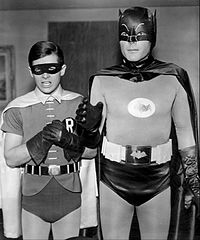Back around 1980, I got my first computer. As I recall, it had the brand name Sinclair and it was connected to a little black and white TV we had in the basement. It had a minimal amount of memory, but I could save programs to a cassette tape connected to the IO port. That computer found its way to a landfill in Alaska a long time ago. It amazes me that almost every one of my students (as well as myself) carries a small computer in their pocket that is hundreds of times more powerful than that old Sinclair. Not only is it more powerful, but my smartphone fits in the palm of my hand. It also amazes me at the growing number of uses a smartphone has in the classroom.
Tag: 9x9x25
Some Tips on Collaborating in Google

Most of the student teams in my face-to-face classes utilize in person meetings along with collaborations through comments. My online students do not usually meet in person so online comments and email (and some phone calls) are their primary means of collaboration.
Sharing – The Google Way

Setting up collaborative teams and putting a project in place that encourages collaboration is just the start. The pressures of work, schedules, and family commitments conspire to draw student into a silent shell. They only care about getting homework assignments and papers done…collaborating is the furthest thing from their mind.
In the middle of a stressful semester, returning emails from fellow teammates are not the highest priority. Trying to collaborate on a document via email is even more challenging. If several students are working on the same document simultaneously and making changes, it is a nightmare to keep track of the changes. This is where a shared document can help.
Ok…Now Go Collaborate!

This is my hope my collaborative teams…together they can do more than any one of them can do alone. However, you can’t throw four or five students together and expect them to be productive right away. Ease them into working together and then have them make some decisions together.
Setting Up Collaborative Teams

The easiest way to assign students to teams is to simply assign them randomly and wait for the fallout. Left on their own, students have a tendency to socialize, not work toward a common goal. A group without a leader is likely to flounder aimlessly until the very last minute. A group without any technology skills will often implode. To be effective, the groups need to be an appropriate mixture. I needed Batman AND Robin (and maybe Batgirl). They had complimentary skills…experience and youthful enthusiasm….brains and support. Teams that have these types of complimentary skills, are most likely to succeed.

